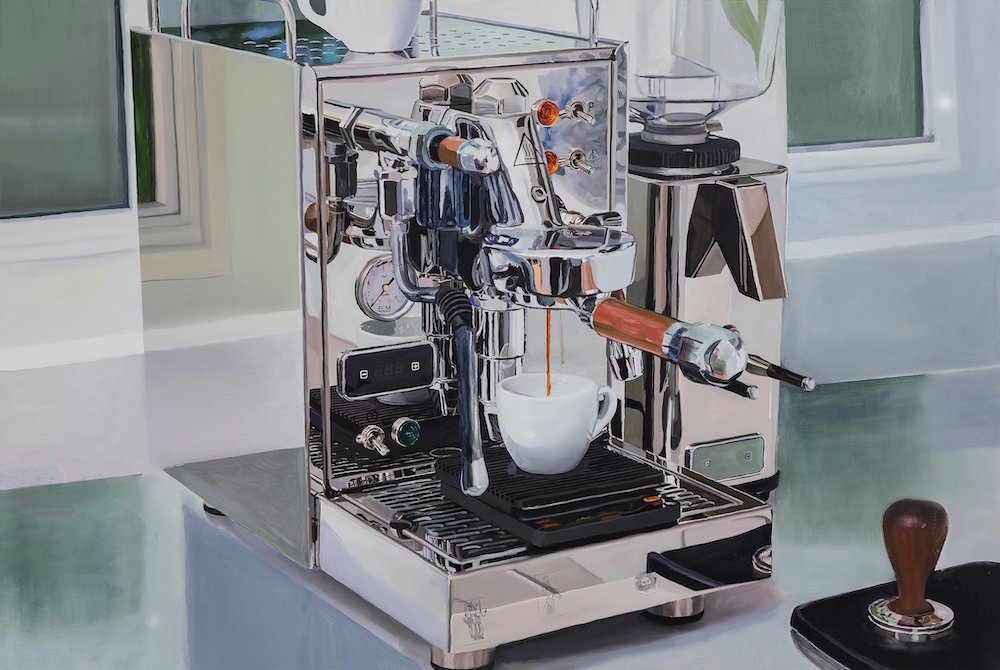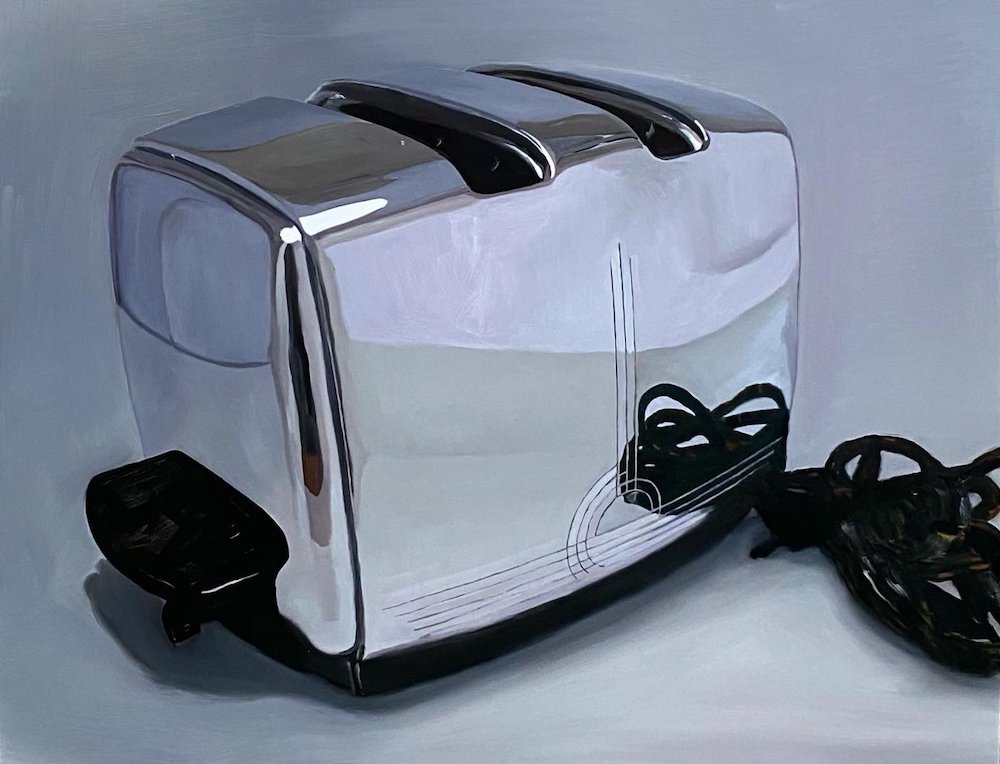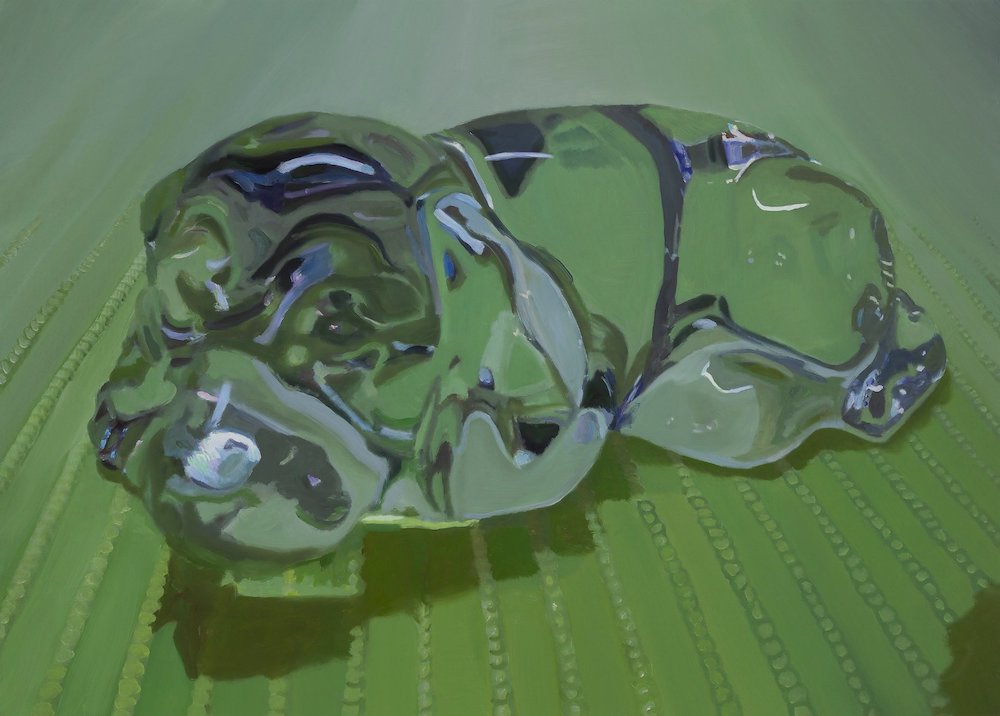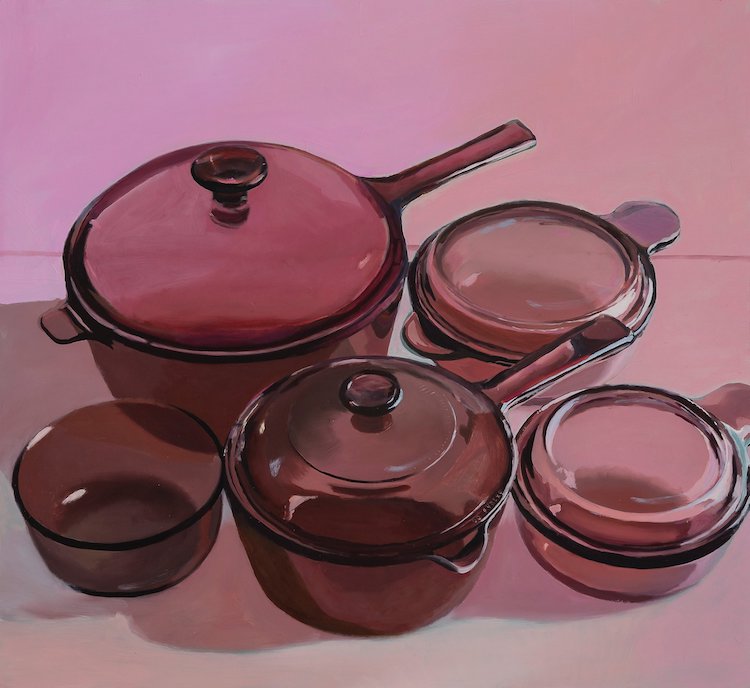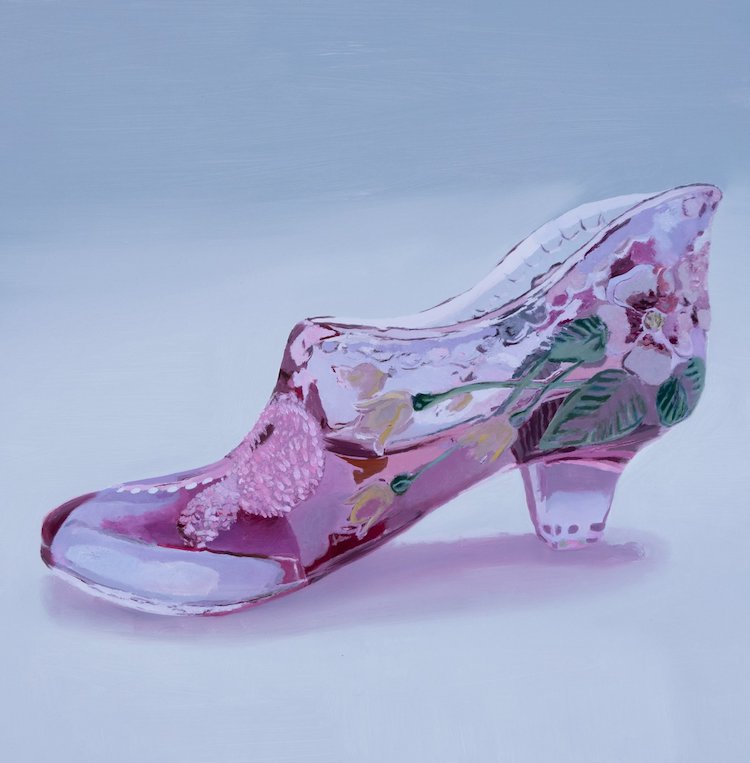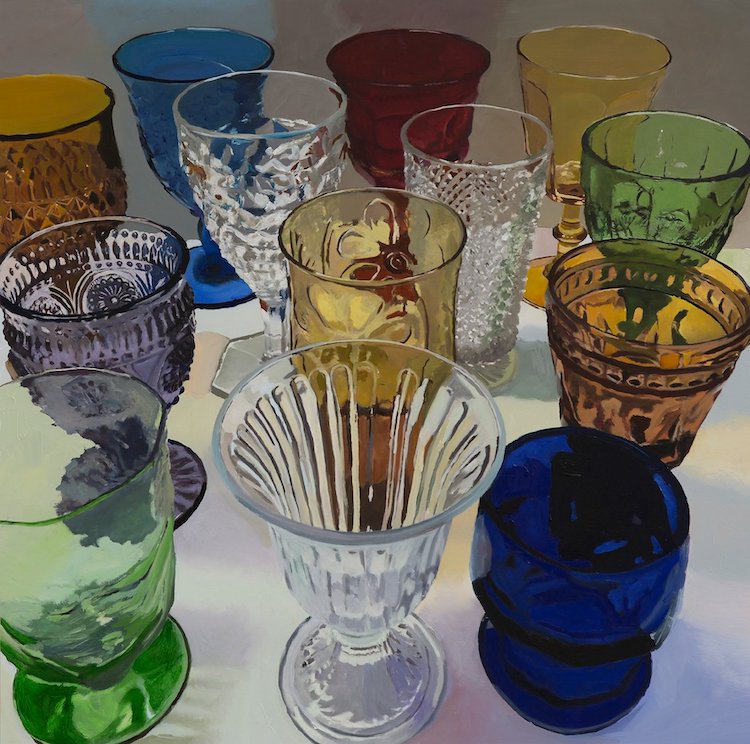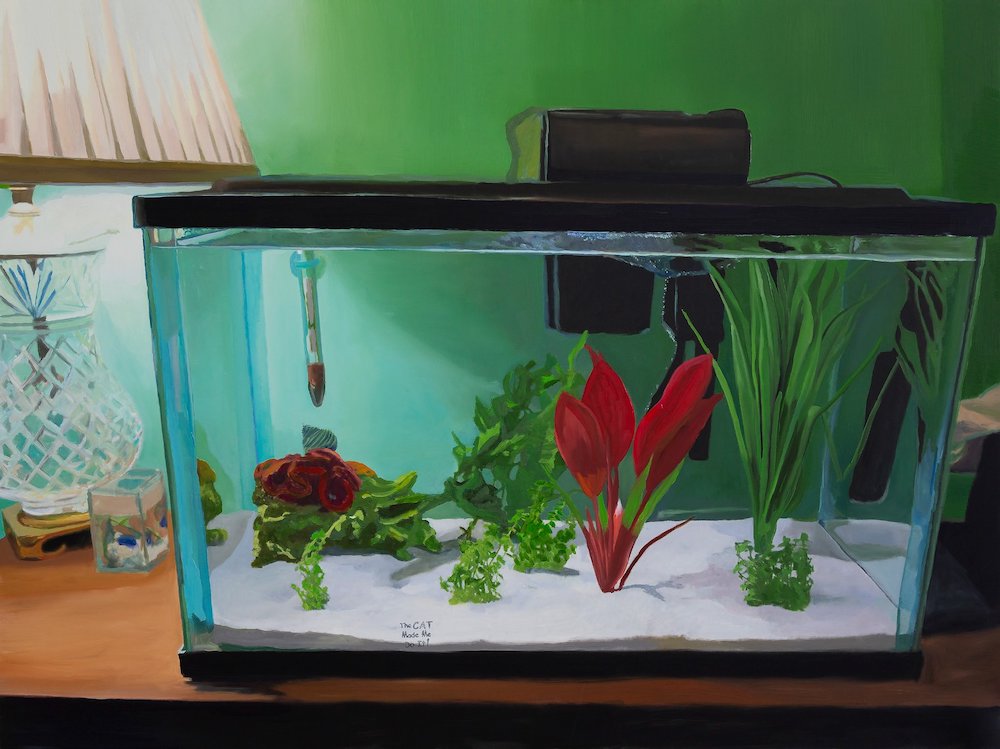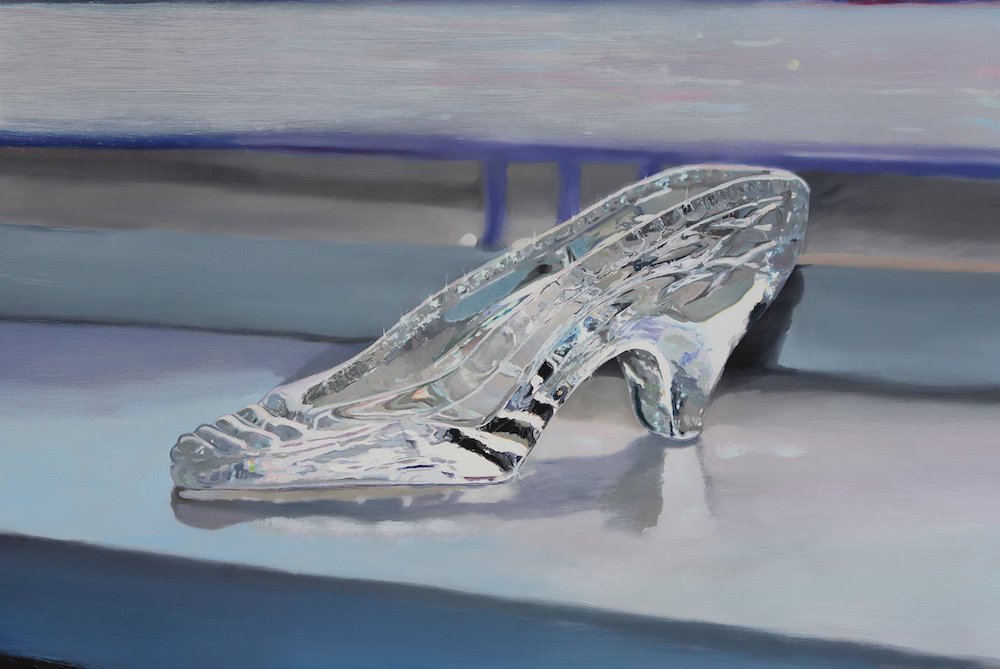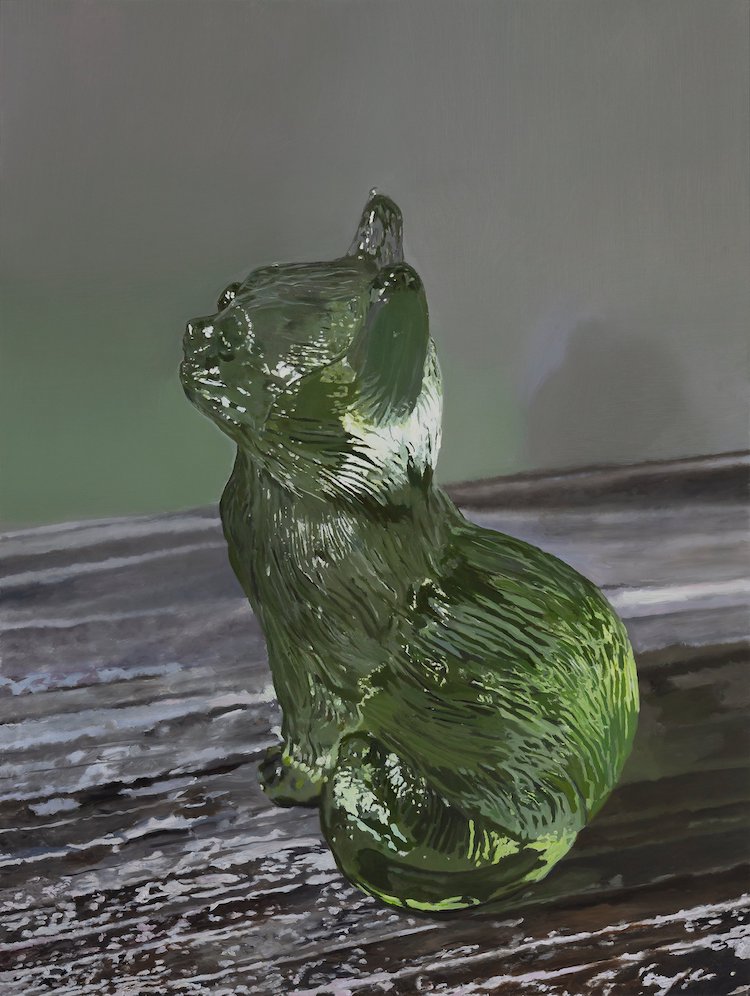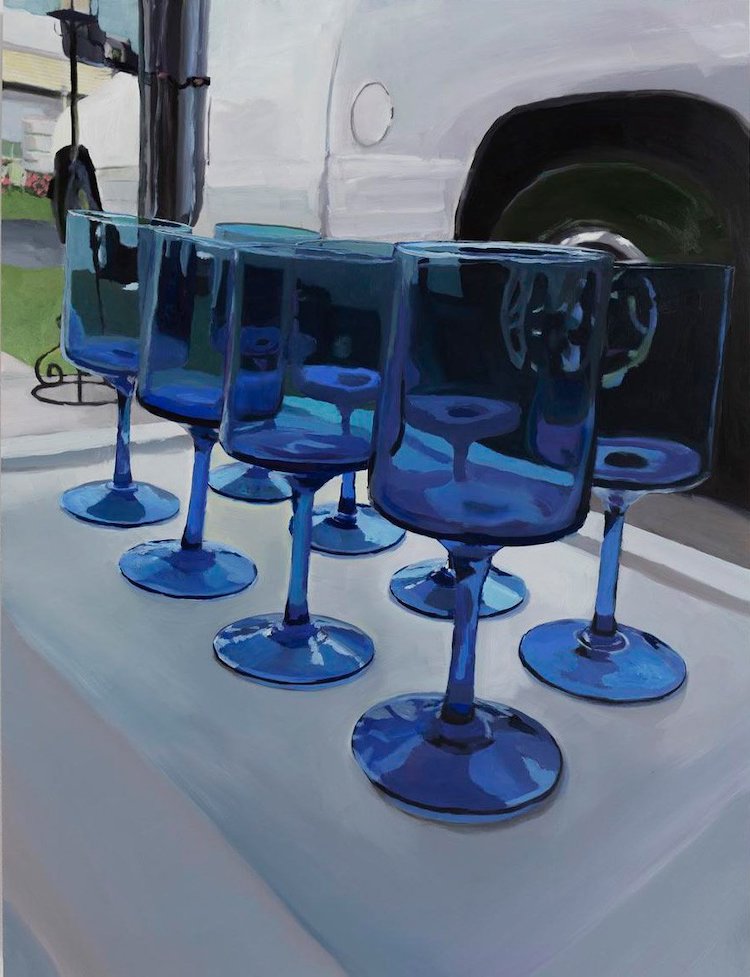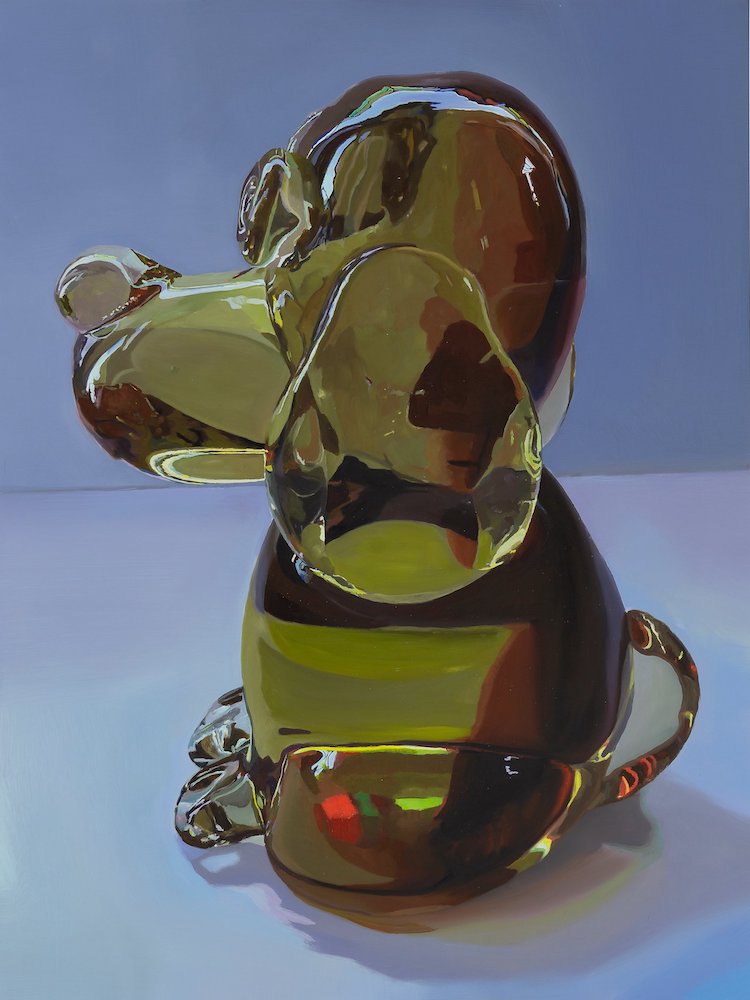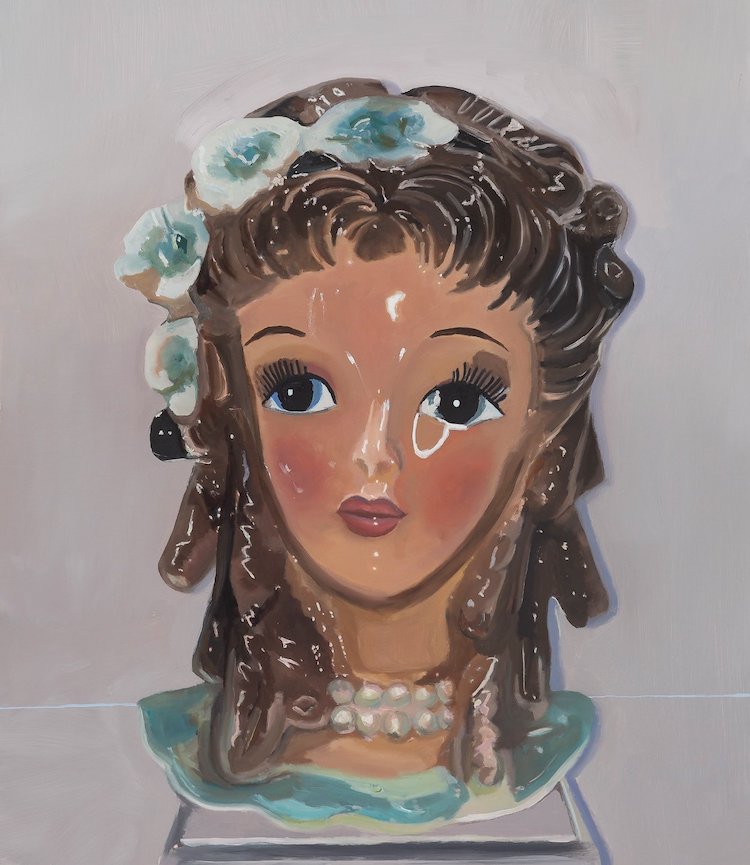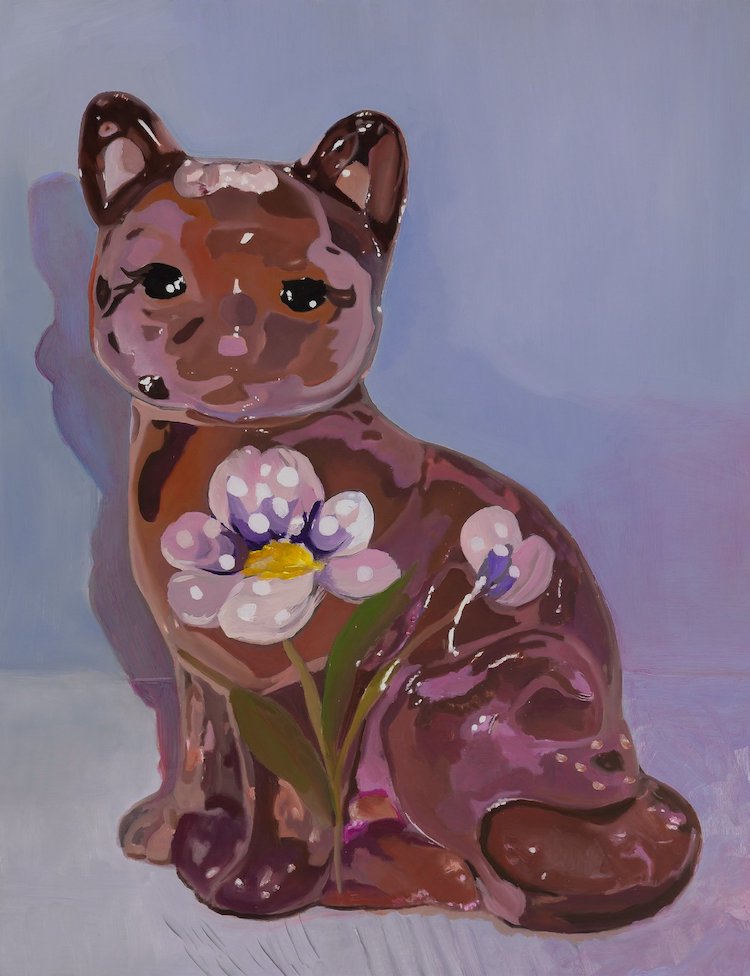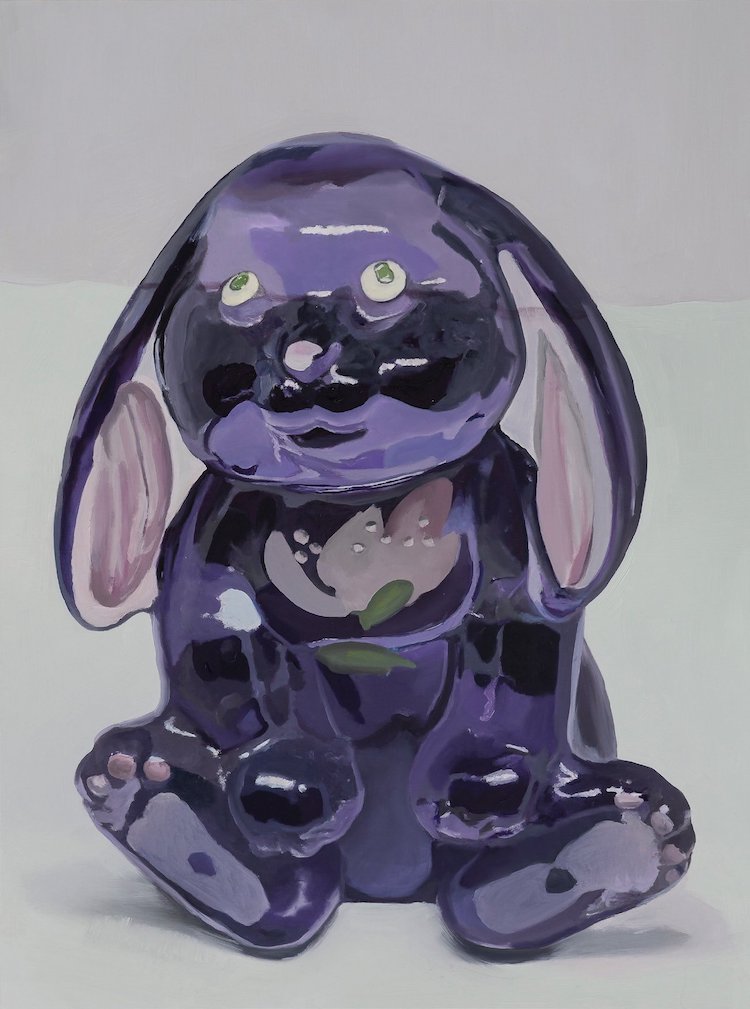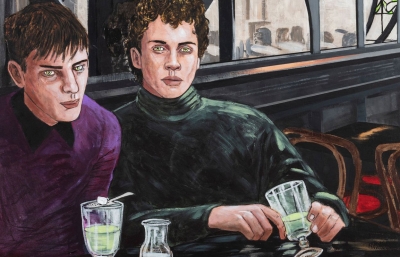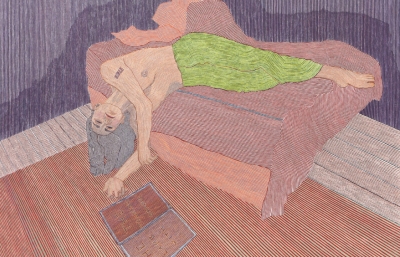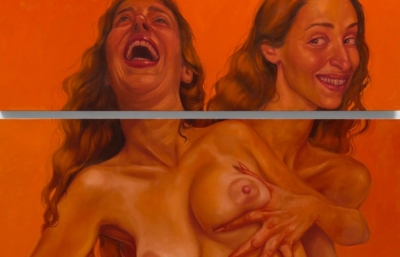With general life going to a standstill all over the world in the past year and a half, we've witnessed a massive revival of interior and still life painting. And one of the artists whose explorations we've enjoyed the most is Nicholas Farhi whose solo show Babushka closed yesterday at Freedom Gallery in NYC.
In his new series of works which inaugurated the gallery's Soho location Farhi is addressing solitude through the depiction of objects around him, with an accent on the ones with the ability to trap light. Whether it's household appliances with their shiny, reflective surfaces, glasses and cookware, or crystal figurines, New York-born artist is putting an obvious emphasis on the visual spectacle conducted by these lifeless subjects. Starting with a controlled, realistic depiction of the general forms and then progressing to almost abstract sections that capture said effects, the portrayed entities are removed from their surroundings and given a new actuality. With so much accent on the light, colors, surfaces, and a whole range of interactions between those, the artist is somehow capturing the deafening silence existing in the world of objects.
With presentations planned in Oslo later this year and during Venice Bienalle in 2022, we've reached out to Farhi ahead of the start of the MFA program at Columbia University to learn more about this particular body of work.
Sasha Bogojev: When did you develop the interest in depicting objects around you and what do you think might've informed it?
Nicholas Farhi: After moving to Mexico City a few years ago (2018) from Los Angeles I really had no friends, and in a new city that I was living in. So I began to look toward essays by Gaughin, and other artists who went to new cities as expatriates. Gaughin was constantly observing and learning about the world, till the day he died he considered himself a student of the world, treating each waking day with an open eye for his surroundings. This alone taught me to look at what I became constantly surrounded by. Visiting my girlfriend’s abuelas and aunts and uncles inspired my still life work in the beginning.
What is it that you like about such observations and how do you approach creating a reference set for the paintings?
The floating between paintings I enjoy. As related to my time in the studio. I can work on the lip of an object and teach myself about another and that’s been really liberating. Like pairing geometric systems and so forth. My wife is an architect and also inspired me to treat my work with a more careful and committed stroke. Once my outline and rough drafts are there I enter into hamlets of abstraction and it’s there in those hours that I get to relax.
Are you portraying the objects solely for their painterly challenges or is there a narrative behind them?
Between not knowing the objects in front of my face three-dimensionally and physically, yes, it’s an activity like for any painter is excitable in a selfish way. Mind, to heart (as they all say), to hand only sources where the work ends up. Pictorially I’m of course attempting to make meta realistic work that feels familiar or, transportable psychology. Sometimes they connect without meaning to in the first place. And getting back into those pockets of color field and abstraction is where I like to be the most, letting the color connect between each idea intermittently.
It feels like you recently switched to exclusively working with glass objects. Was this a conscious decision or a progression of your previous interest?
It’s always about the visual adventure, finding boundaries and kicking them away, attempting to challenge what we do with our eyes while encountering items. The glass objects for me personally represent borders and maps of my past and present, trails of light, the challenge for me after looking at works by, say, Ralph Goings, was trapping the light in an object. I like the glass because it allows for that scrimmage of abstraction versus some form of drafting and obsession.
What pushed you towards it what do you enjoy about working with transparent objects? Was it your stay in Italy and Giorgio Morandi's work perhaps?
I used to make shoebox dioramas when I was young, living in a single-parent home, my mom would go to school at night and loved recreating movie scenes inside of these high heel shoe boxes. I’d always put a layer of cellophane on top to create a barrier and in a way try to trap the light of the scene in there permanently, and for the viewer to explore in minuscule. More often than not I am attempting to do that inside the objects I make my work about. Reading about Morandi’s rummaging of discarded bits while at a residency at Palazzo Monti certainly helped. I wasn’t aware that his works were always about discarded objects that he saw at flea markets and early 20th century garages throughout Italy, collecting physical forms from people he did not know.
What are some of the sources of inspiration you're aware of?
Some of my pictures are inspired by eBay salespeople. That’s been funny—finding a collector’s bevy of glass objects visually in a context where they have no intention of calling their uploads still lifes. Tapping into that, without subverting what I see so much so to become eccentric, is what has transpired most through this body of work I have been making for the past few years.
https://nickfarhi.com/

